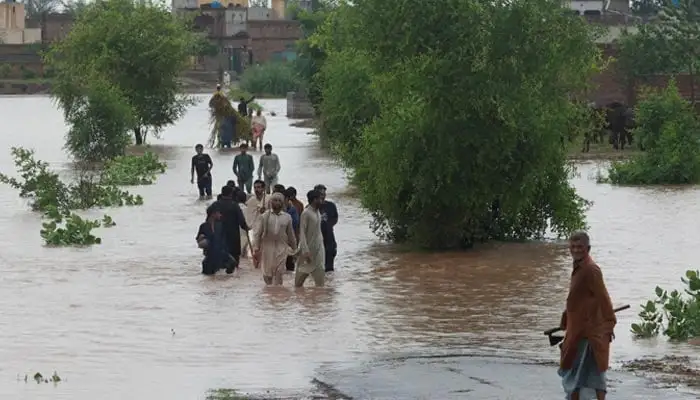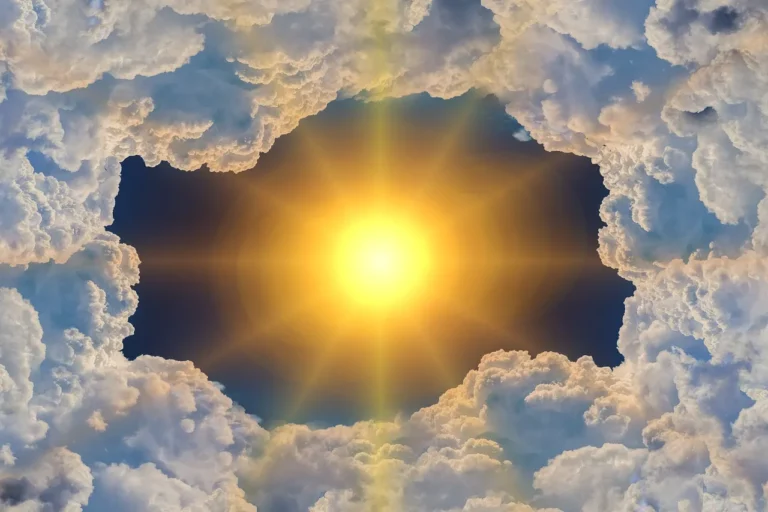A river that doesn’t forgive easily
I grew up in Punjab, where the Indus and its branches shape life. My grandfather used to say, “These rivers have moods.” Some years they gave bumper crops, some years they swallowed everything. He was right. The river never forgives, it just waits for the right season. Climate change has made that wait shorter. Now floods in Pakistan feel less like accidents and more like a yearly appointment.
Floods used to be rare, not anymore
I remember when a flood was news. Sirens, whispers, schools shut, families climbing on rooftops. It was unusual, frightening, and unforgettable. Fast forward to today and floods feel like part of the calendar. Every summer, heavy monsoon rains lash Punjab, Sindh, Khyber Pakhtunkhwa. Villages drown, crops vanish, roads collapse. It’s not a “once in a decade” story anymore. Climate change has changed the rhythm, and we’re living inside that new beat.
The nightmare of 2022
Pakistan’s worst recent flood came in 2022. The numbers still sting. Around 33 million people were affected nationwide. More than 1,700 lives were lost, including 600 children. Over 2 million houses broke or washed away. Whole towns disappeared under brown, angry water. Farms? Gone. More than 8 million acres of cotton, sugarcane, rice, wheat—finished.
Punjab’s southern districts, especially Rajanpur, DG Khan, Layyah, Muzaffargarh, turned into lakes. Between 3 and 4 million people in Punjab alone had to leave their homes. Economists say the loss was $30 billion. But try telling that to a farmer watching his dead crop. For him, it wasn’t billions—it was survival.
I visited Muzaffargarh that year. After the water pulled back, the silence was haunting. No tractors, no birds, just mud sucking at boots.
2023 didn’t bring relief
People prayed 2023 would be kinder. It wasn’t. Heavy rains came, and then India released water into the Sutlej and Ravi. Rivers swelled and burst. Kasur, Okara, Bahawalnagar—hundreds of villages drowned. More than 100,000 people in Punjab lost their homes.
I met a schoolteacher in Kasur who turned his classroom into a shelter. Kids sat on desks, not for lessons, but to keep their feet dry. Climate change doesn’t just bring more rain—it magnifies our weakest points: unplanned housing, broken embankments, political fights over water.
2024 looked calm, but wasn’t
Some said 2024 was mild. They weren’t in Lahore when the streets turned into rivers. They didn’t see cars floating in Multan or shopkeepers sweeping water till dawn. It wasn’t 2022, but still 50,000 acres of crops in Punjab drowned.
This time it was urban flooding. It taught a scary lesson: floods don’t belong only to riversides. They belong to clogged drains, concrete jungles, and cities that refuse to respect natural water channels.
Why Pakistan floods so much
The geography sets the stage. We live in the monsoon belt, wrapped by the Indus system. That’s normal. What’s not normal is the speed at which the climate is shifting.
Warmer air holds more moisture. So when it rains, it pours. Glaciers in the north melt quicker, sending more water down to rivers already stuffed with rain. Deforestation steals away natural sponges. Cities sprawl, covering soil with concrete, leaving no place for water to seep. Any one of these factors alone? Manageable. Together? Chaos.
Beyond numbers: faces of the flood
I met a cotton farmer near DG Khan after the 2022 flood. His hands were cracked, nails dirty from pulling out dead stalks. He told me, “I worked a year for this, the river took it in one day.” His young son carried a bucket of muddy water. That image stays with me.
Reports say “millions displaced,” but those words don’t show coughing children in damp tents or women cooking on broken bricks under plastic sheets. That’s the real cost of climate change in Pakistan—human pain written in mud and water.
Economy takes a beating
Floods don’t just hit villages. They hit Pakistan’s economy hard. Cotton lost in 2022 shook the textile industry, our biggest export sector. Sugar mills went silent. Rice exports shrank. Inflation rose as food supplies broke.
And the damage doesn’t vanish once the water recedes. It spills into the next year—farmers stuck in debt, markets unstable, government begging for billions in relief. Floods are no longer just a weather problem; they’re an economic crisis.
Health and education drown too
Stagnant water becomes a breeding ground for mosquitoes. Dengue, malaria, cholera—cases spike every time. Clean water disappears, kids get diarrhea, and clinics overflow. Schools double as shelters, so studies stop for months. Many children never return.
When we talk about “flood frequency,” we’re also talking about lost education, broken healthcare, and futures cut short.
Resilience has limits
Pakistanis are tough. I’ve seen neighbours share food, students paddle boats to deliver water bottles, strangers carrying strangers on their backs. In Layyah, I watched college kids distribute supplies during the 2022 flood with nothing but courage.
But let’s be honest. You can’t rebuild the same house every two years. You can’t plant crops with hope when you know the river will come again. Resilience is no longer a badge of honor—it’s survival against climate change.
What can we do?
We need stronger dams, proper drainage, better embankments—yes. But that’s not enough. The real change lies in planning. Stop building homes on floodplains. Treat glacier melt as part of water policy, not an afterthought. Protect forests, restore wetlands.
And Pakistan has the right to demand climate justice. We contribute less than 1% of global emissions, yet pay one of the heaviest prices. The world owes support, not sympathy.
2025 and the uneasy wait
This year’s monsoon has already started whispering threats. Clouds gather, and families near Sutlej or Chenab watch the sky nervously. Rain doesn’t mean relief from heat anymore. It could mean evacuation, another night under plastic sheets, another season without crops.
Floods are no longer about probability. They are certain. The only uncertain thing is how prepared—or unprepared—we will be.
A final scene to remember
Not long ago, I stood by the Ravi in Lahore. The river looked calm, children played cricket, the city buzzed. For a moment, it was peaceful. Then I remembered my grandfather’s words: “The river has moods.” Climate change has made those moods unpredictable, and often violent.
The floods will come again. The question is, will we still act surprised when they do?


